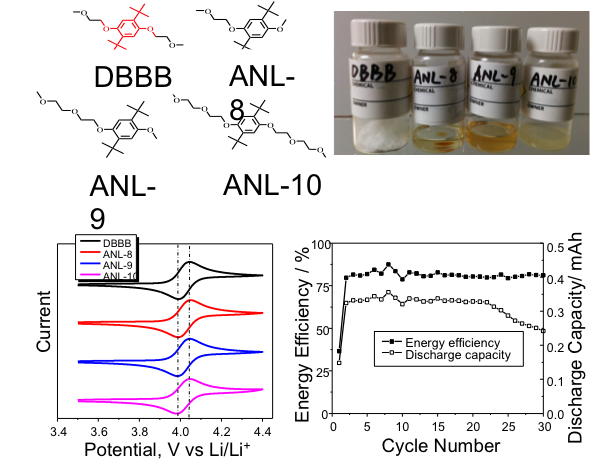
Scientific Achievement
- A new series of novel dimethoxybenzene based catholyte molecules were developed in order to further improve the solubility by tuning chemical structures
- All those molecules are electrochemically reversible at high redox potentials (4.0 V vs Li/Li+) and two of them (ANL-8 and ANL-9) are found to be liquid instead of solid
- Fully characterizations in terms of molecular properties and electrochemical performance were conducted, ANL-8 was successfully demonstrated as a catholyte material by bulky electrolysis
Significance and Impact
- Redox molecular engineer towards desired physical / electrochemical properties could be achieved by altering the molecular structures
- The liquid nature of catholyte molecules could profoundly impact non-aqueous RFBs by dramatically improving the energy density
Research Details
- New molecules were developed by incorporation of PEO chains into the dimethoxy-di-tert-butyl-benzene platform
- Extensive characterizations, including CV, bulky electrolysis, DFT calculations, have been conducted to evaluate the new molecules and understand the property changes
Work performed at Argonne National Laboratory (JCESR managing partner) J. Huang, L. Cheng, R. S. Assary, P. Wang, Z. Xue, A. K. Burrell, L. A. Curtiss, and L. Zhang, Energy Mater. 2014.

